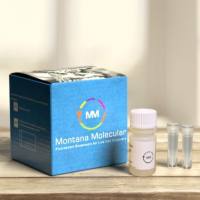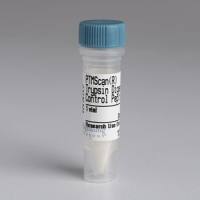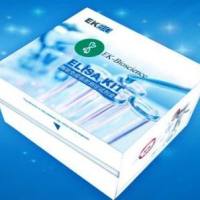Targeted Metabolomics
互联网
- Abstract
- Table of Contents
- Materials
- Figures
- Literature Cited
Abstract
The metabolome is the terminal downstream product of the genome and consists of the total complement of all the low?molecular?weight molecules (metabolites) in a cell, tissue, or organism. Metabolomics aims to measure a wide breadth of small molecules in the context of physiological stimuli or disease states. Metabolomics methodologies fall into two distinct groups: untargeted metabolomics, an intended comprehensive analysis of all the measurable analytes in a sample including chemical unknowns, and targeted metabolomics, the measurement of defined groups of chemically characterized and biochemically annotated metabolites. The methodologies considered in this unit focus on the processes of conducting targeted metabolomics experiments, and the advantages of this general approach are highlighted herein. This unit outlines procedures for extracting nitrogenous metabolites (including amino acids), lipids, and intermediary metabolites (including TCA cycle oxoacids) from blood plasma. Specifically, protocols are described for analyzing these metabolites using targeted metabolomics experiments based on liquid chromatography?mass spectrometry. Curr. Protoc. Mol. Biol. 98:30.2.1?30.2.24. © 2012 by John Wiley & Sons, Inc.
Keywords: targeted metabolomics; liquid chromatography?mass spectrometry; multiple reaction monitoring
Table of Contents
- Introduction
- Strategic Planning
- Basic Protocol 1: Targeted Metabolomic Analysis of Hydrophilic Metabolites and Amino Acids from Blood Plasma Using Hydrophilic‐Interaction Liquid Chromatography
- Support Protocol 1: Sample Preparation for Targeted Metabolomics: Extraction of Hydrophilic Metabolites and Amino Acids from Blood Plasma, Cerebrospinal Fluid, and Urine
- Basic Protocol 2: Targeted Metabolomic Analysis of Intermediary Metabolites from Blood Plasma Using Polar Reversed‐Phase Chromatography
- Support Protocol 2: Sample Preparation for Targeted Metabolomics: Extraction of Intermediary Metabolites from Blood Plasma
- Basic Protocol 3: Analysis of Targeted Metabolomic LC‐MS Data
- Commentary
- Literature Cited
- Figures
- Tables
Materials
Basic Protocol 1: Targeted Metabolomic Analysis of Hydrophilic Metabolites and Amino Acids from Blood Plasma Using Hydrophilic‐Interaction Liquid Chromatography
Materials
Support Protocol 1: Sample Preparation for Targeted Metabolomics: Extraction of Hydrophilic Metabolites and Amino Acids from Blood Plasma, Cerebrospinal Fluid, and Urine
Materials
Basic Protocol 2: Targeted Metabolomic Analysis of Intermediary Metabolites from Blood Plasma Using Polar Reversed‐Phase Chromatography
Materials
Support Protocol 2: Sample Preparation for Targeted Metabolomics: Extraction of Intermediary Metabolites from Blood Plasma
Materials
Basic Protocol 3: Analysis of Targeted Metabolomic LC‐MS Data
Materials
|
Figures
-
Figure 30.2.1 Relationship between the human genome, proteome, and metabolome (from Gerszten and Wang, ). View Image -
Figure 30.2.2 (A ) Workflow for a LC triple‐quadrupole MS MRM targeted metabolomics experiment. (B ) The resolution of chromatography allows the separation of metabolites even in the case of a shared MRM transition. (C ) Specific precursor/product ion transitions in MRM experiments identify individual metabolites. View Image -
Figure 30.2.3 Example of an experiment to assess biological and technical variance (right, pre and post), variance in sample preparation (center), and the contribution of LC‐MS profiling to overall variance (left). View Image -
Figure 30.2.4 Graph of coefficient of variance (CV) versus integrated peak area for metabolites analyzed from pooled plasma using . CV decreases as integrated peak area increases. View Image
Videos
Literature Cited
| Literature Cited | |
| An, J., Muoio, D.M., Shiota, M., Fujimoto, Y., Cline, G.W., Shulman, G.I., Koves, T.R., Stevens, R., Millington, D., and Newgard, C.B. 2004. Hepatic expression of malonyl‐CoA decarboxylase reverses muscle, liver and whole‐animal insulin resistance. Nat. Med. 10:268‐274. | |
| Bligh, E.G. and Dyer, W.J. 1959. A rapid method of total lipid extraction and purification. Can. J. Biochem. Physiol. 37:911‐917. | |
| Dudley, E., Yousef, M., Wang, Y., and Griffiths, W.J. 2010. Targeted metabolomics and mass spectrometry. Adv. Protein Chem. Struct. Biol. 80:45‐83. | |
| Dunn, W.B., Broadhurst, D.I., Atherton, H.J., Goodacre, R., and Griffin, J.L. 2011. Systems level studies of mammalian metabolomes: The roles of mass spectrometry and nuclear magnetic resonance spectroscopy. Chem. Soc. Rev. 40:387‐426. | |
| Festa, A., Williams, K., Hanley, A.J., Otvos, J.D., Goff, D.C., Wagenknecht, L.E., and Haffner, S.M. 2005 Nuclear magnetic resonance lipoprotein abnormalities in prediabetic subjects in the Insulin Resistance Atherosclerosis Study. Circulation 111:3465‐3472. | |
| Fiehn, O. 2001. Combining genomics, metabolome analysis, and biochemical modelling to understand metabolic networks. Comp. Funct. Genomics. 2:155‐168. | |
| Forster, J., Famili, I., Fu, P., Palsson, B.O., and Nielsen, J. 2003. Genome‐scale reconstruction of the Saccharomyces cerevisiae metabolic network. Genome Res. 13:244‐253. | |
| Gerszten, R.E. and Wang, T.J. 2008. The search for new cardiovascular biomarkers. Nature 451:949‐952. | |
| Gieger, C., Geistlinger, L., Altmaier, E., Hrabé de Angelis, M., Kronenberg, F., Meitinger, T., Mewes, H.W., Wichmann, H.‐E., Weinberger, K.M., Adamski, J., Illig, T., and Suhre, K. 2008. Genetics meets metabolomics: A genome‐wide association study of metabolite profiles in human serum. PLOS Genet. 4:e100282. | |
| Godovac‐Zimmermann, J. and Brown, L.R. 2001. Perspectives for mass spectrometry and functional proteomics. Mass Spectrom. Rev. 20:1‐57. | |
| Goodacre, R. 2003. Metabolic Profiling: Its Role in Biomarker Discovery and Gene Function Analysis. Kluwer Academic Publishers, London. | |
| Goodacre, R., Vaidyanathan, S., Dunn, W.B., Harrigan, G.G., and Kell, D.B. 2004 Metabolomics by numbers: Acquiring and understanding global metabolite data. Trends Biotechnol. 22:245‐252. | |
| Griffin, J.L. 2006. The Cinderella story of metabolic profiling: Does metabolomics get to go to the functional genomics ball? Philos. Trans. R Soc. Lond. B Biol. Sci. 361:147‐161. | |
| Griffin, J.L., Nicholls, A.W., Keun, H.C., Mortishire‐Smith, R.J., Nicholson, J.K., and Kuehn, T. 2002. Metabolic profiling of rodent biological fluids via 1H NMR spectroscopy using a 1 mm microlitre probe. Analyst 127:582‐584. | |
| Griffin, J.L., Cemal, C.K., and Pook, M.A. 2004. Defining a metabolic phenotype in the brain of a transgenic mouse model of spinocerebellar ataxia 3. Physiol. Genomics 16:334‐340. | |
| Griffiths, J.R., McSheehy, P.M., Robinson, S.P., Troy, H., Chung, Y.L., Leek, R.D., Williams, K.J., Stratford, I.J., Harris, A.L., and Stubbs, M. 2002. Metabolic changes detected by in vivo magnetic resonance studies of HEPA‐1 wild‐type tumours deficient in hypoxia‐inducible factor‐1β (HIF‐1β): Evidence of an anabolic role for the HIF‐1 pathway. Cancer Res. 62:688‐695. | |
| Han, X., Holtzman, D.M., McKeel, D.W. Jr., Kelley, J., and Morris, J.C. 2002. Substantial sulfatide deficiency and ceramide elevation in very early Alzheimer's disease: Potential role in disease pathogenesis. J. Neurochem. 82:809‐818. | |
| Knochenmuss, R. 2003. A quantitative model of ultraviolet matrix‐assisted laser desorption/ionization including analyte ion generation. Anal. Chem. 75:2199‐2207. | |
| Lewis, G.D., Farrell, L., Wood, M.J., Martinovic, M., Arany, Z., Rowe, G.C., Souza, A., Cheng, S., McCabe, E.L., Yang, E., Shi, X., Deo, R., Roth, F.P., Asnani, A., Rhee, E.P., Systrom, D.M., Semigran, M.J., Vasan, R.S., Carr, S.A., Wang, T.J., Sabatine, M.S., Clish, C.B., and Gerszten, R.E. 2010. Metabolic signatures of exercise in human plasma. Sci. Trans. Med. 2:33ra37. | |
| Lindon, J.C., Holmes, E., and Nicholson, J.K. 2003. So what's the deal with metabonomics? Anal. Chem. 75:384A‐391A. | |
| Masson, P., Couto Alves, A., Ebbels, T.M.D., Nicholson, J.K., and Want, E.J. 2010. Optimization and evaluation of metabolite extraction protocols for untargeted metabolic profiling of liver samples by UPLC‐MS. Anal. Chem. 82:7779‐7786 | |
| Newgard, C.B., An, J., Bain, J.R., Muehlbauer, M.J., Stevens, R.D., Lien, L.F., Haqq, A.M., Shah, S.H., Arlotto, M., Slentz, C.A., Rochon, J., Gallup, D., Ilkayeva, O., Wenner, B.R., Yancy, W.S. Jr., Eisenson, H., Musante, G., Surwit, R.S., Millington, D.S., Butler, M.D., and Svetkey, L.P. 2009. A branched‐chain amino acid‐related metabolic signature that differentiates obese and lean humans and contributes to insulin resistance. Cell Metab. 9:311‐326. | |
| Nicholson, J.K., Lindon, J.C., and Holmes, E. 1998. ‘Metabonomics’: Understanding the metabolic responses of living systems to pathophysiological stimuli via multivariate statistical analysis of biological NMR spectroscopic data. Xenobiotica 29:1181‐1189. | |
| Odunsi, K., Wollman, R.M., Ambrosone, C.B., Hutson, A., McCann, S.E., Tammela, J., Geisler, J.P., Miller, G., Sellers, T., Cliby, W., Qian, F., Keitz, B., Intengan, M., Lele, S., and Alderfer, J.L. 2005. Detection of epithelial ovarian cancer using 1H‐NMR‐based metabonomics. Int. J. Cancer 113:782‐788. | |
| Oliver, S.G., Winson, M.K., Kell, D.B., and Baganz, F. 1998. Systematic functional analysis of the yeast genome. Trends Biotechnol. 16:373‐378. | |
| Oursel, D., Loutelier‐Bourhis, C., Orange, N., Chevalier, S., Norris, V., and Lange, C.M. 2007. Identification and relative quantification of fatty acids in Escherichia coli membranes by gas chromatography/mass spectrometry. Rapid Commun. Mass Spectrom. 21:3229‐3233. | |
| Panisko, E.A., Conrads, T.P., Goshe, M.B., and Veenstra, T.B. 2002. The postgenomic age: Characterization of proteomes. Exp. Hematol. 30:97‐107. | |
| Pauling, L., Robinson, A.B., Teranishi, R., and Cary, P. 1971. Quantitative analysis of urine vapor and breath by gas‐liquid partition chromatography. Proc. Natl. Acad. Sci. U.S.A. 68:2374‐2376. | |
| Peterson, B.L. and Cummings, B.S. 2006. A review of chromatographic methods for the assessment of phospholipids in biological samples. Biomed. Chromatogr. 20:227‐243. | |
| Petkovic, M., Schiller, J., Muller, M., Benard, S., Reichl, S., Arnold, K., and Arnhold, J. 2001. Detection of individual phospholipids in lipid mixtures by matrix‐assisted laser desorption/ionization time‐of‐flight mass spectrometry: Phosphatidylcholine prevents the detection of further species. Anal. Biochem. 289:202‐216. | |
| Roberts, L.D., McCombie, G., Titman, C.M., and Griffin, J.L. 2008. A matter of fat: An introduction to lipidomic profiling methods. J. Chromatogr. B Analyt. Technol. Biomed. Life Sci. 871:174‐181. | |
| Roberts, L.D., Murray, A.J., Menassa, D., Ashmore, T., Nicholls, A.W., and Griffin, J.L. 2011. The contrasting roles of PPARδ and PPARγ in regulating the metabolic switch between oxidation and storage of fats in white adipose tissue. Genome Biol. 12:R75. | |
| Sellick, C.A., Knight, D., Croxford, A.S., Maqsood, A.R., Stephens, G.M., Goodacre, R., and Dickson, A.J. 2010. Evaluation of extraction processes for intracellular metabolite profiling of mammalian cells: Matching extraction approaches to cell type and metabolite targets. Metabolomics 6:427‐438. | |
| Spencer, F., Lagarde, M., Geloen, A., and Record, M. 2003. What is lipidomics? Eur. J. Lipid Sci. Technol. 105:481‐482. | |
| Wakelam, M.J., Pettitt, T.R., and Postle, A.D. 2007. Lipidomic analysis of signaling pathways. Methods Enzymol. 432:233‐246. | |
| Wang, C., Kong, H., Guan, Y., Yang, J., Gu, J., Yang, S., and Xu, G. 2005. Plasma phospholipid metabolic profiling and biomarkers of type 2 diabetes mellitus based on high‐performance liquid chromatography/electrospray mass spectrometry and multivariate statistical analysis. Anal. Chem. 77:4108‐4116. | |
| Wang, T.J., Larson, M.G., Vasan, R.S., Cheng, S., Rhee, E.P., McCabe, E., Lewis, G.D., Fox, C.S., Jacques, P.F., Fernandez, C., O'Donnell, C.J., Carr, S.A., Mootha, V.K., Florez, J.C., Souza, A., Melander, O., Clish, C.B., and Gerszten, R.E. 2011. Metabolite profiles and the risk of developing diabetes. Nat. Med. 17:448‐453. | |
| Wenk, M.R. 2005. The emerging field of lipidomics. Nat. Rev. Drug Discov. 4:594‐610. | |
| Wishart, D.S. 2011. Advances in metabolite identification. Bioanalysis 3:1769‐1782. | |
| Xia, J., Psychogios, N., Young, N., and Wishart, D.S. 2009. MetaboAnalyst: A web server for metabolomic data analysis and interpretation. Nucleic Acids Res. 37:W652‐W660. | |
| Yu Lin, C., Wu, H., Tjeerdema, R.S., and Viant, M.R. 2007. Evaluation of metabolite extraction strategies from tissue samples using NMR metabolomics. Metabolomics 3:55‐67. |






